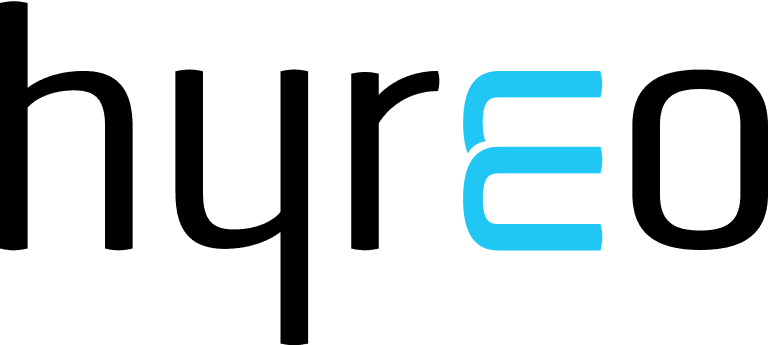The website of the National Football League (NFL) explains the Rooney Rule, adopted in 2003, as follows:
The Rooney Rule, based on the recommendations of the NFL’s Workplace Diversity Committee, initiated the NFL’s attempts toward Diversity, Equity, and Inclusion (DEI).
The Rooney Rule …. promotes diverse leadership among NFL clubs to ensure that promising candidates have the opportunity to prove they have the necessary skills and qualifications to excel.
Through hiring best practices, the Rooney Rule aims to increase the number of minorities hired in head coach, general manager, and executive positions. This diversity enriches the game and creates a more effective, quality organization from top to bottom.”
The Rooney Rule, based on the recommendations of the NFL’s Workplace Diversity Committee, initiated the NFL’s attempts toward Diversity, Equity, and Inclusion (DEI).
When the NFL pays attention to something, you know it’s important enough. And the benefits of DEI mentioned by the NFL are applicable to every type of organization, whether Public or Private, commercial or not-for-profit.
DEI initiatives aim to promote diversity, equity, and inclusion by implementing programs and policies that increase the representation of underrepresented groups, including but not limited to individuals of different religions, races, sexes, sexual orientations, ethnicities, disabilities, and more.
By acknowledging and valuing the unique challenges faced by different groups, DEI initiatives foster a culture that recognizes and respects the diverse perspectives and approaches that each individual brings to the table.
Importance of Accountability in DEI
Accountability in DEI gives the employees a clear plan of action. They understand what is expected of them and by when. When they have an idea of the resources, and the management support, that they have, they know how to fulfill those expectations.
Responsibility boosts confidence and stimulates action. Accountability and transparency influence performance and behavior. Greater accountability enhances commitment towards work.
Accountability, thus, leads to the recognition of willing workers and achievers, which boosts their motivation. At the same time, it helps to nudge the laggards, who may display a resistance to the depth and scale of change warranted.
#1 Ensures Follow-Through
Accountability ensures that DE&I initiatives are not just talked about but also followed through. Without accountability, initiatives can be easily forgotten or neglected.
#2 Measures Progress
Accountability helps in measuring progress towards achieving DE&I goals, evaluating the success of DEI policies and programs. It allows organizations to identify areas that need improvement and track their progress over time, performing course corrections as required.
#3 Creates a Culture of Responsibility
When leaders and employees are held accountable for their actions and behaviors, it creates a culture of responsibility. This, in turn, promotes an inclusive environment where everyone feels valued and respected.
#4 Builds Trust
Holding individuals and teams accountable for DE&I initiatives builds trust among employees, customers, and stakeholders. It sends a clear message that the organization is committed to creating a diverse and inclusive workplace.
#5 Drives Results
Accountability is essential in driving results. When leaders and employees are held accountable for DE&I initiatives, they are more likely to take action and drive positive change.
How to Drive Accountability for DEI
Accountability implies consequences. But employees should not feel burdened or stressed by it. On the contrary, accountability must become a motivator. This is achieved when the organization has set clear goals and parameters and communicated these to the employees along with the expected outcomes. A DEI-enabled model can accelerate the process.
The following steps can help drive accountability efficiently.
#1 Inform — Broadcast your ‘Why’ before the ‘What’ and ‘How’
Change being the only constant is an undeniable truth. However, another inevitable truth is the ‘resistance’ to that change. Awareness is the only tool that can bring down resistance with minimum friction.
Your employees deserve to know ‘why’ they are being jolted out of their comfort zones. Why should they modify their attitudes and behavior at the risk of lowering their productivity? This may be only a perceived risk and even only temporary, but to them, it’s very real and potentially career-affecting.
Share data on, say, how a low DEI score makes it harder not only to retain but also attract talent, on how homogeneous groups are more likely to get trapped by group-think or herd mentality. On the other hand, ‘inclusive’ teams help make progressive and more precise decisions.
Information breeds cooperation. Teams motivated from within will more readily implement the ‘what’ and the ‘how.’
#2 Define your DEI priorities
DEI accountability must ultimately become evident through daily behavior and activities. The company leadership should clearly communicate their expectations in this regard. A proactive step like increasing diversity at the higher levels of management will send a clear message across the organization.
The following points attempt to break down the process into progressive stages:
- Within the organization, look out for avenues that display gaps in diversity and equity and are, thus, incongruent with your DEI goals
- Identify precise areas where you need to and, more importantly, are willing to change
- Establish clear parameters and end metrics
- Define milestones along your journey toward becoming a DEI-accountable organization
- Allocate the necessary resources and time for achieving those milestones
- Continually track the progress of your DEI initiatives
- Regularly share the progress with external and internal stakeholders. This increases the accountability of the organization as a whole and aids in building an ‘Employer Brand’
#3 Evaluate
Share data and statistics with your stakeholders to measure the effectiveness of your accountability initiatives. There is no progress without measurement. Evaluate your progress against industry benchmarks set by industry ‘inclusion’ leaders.
#4 Invite Suggestions and Feedback
Proactively invite feedback on your DEI initiatives. People are more cooperative when they are a part of the solution and their opinions are heard. Many times, guidelines are more effective than instructions. Provide a framework and an end goal, and let people fill in the details. This can potentially produce more than one solution.
When you recognize a problem area, be ready to iterate on your process. Pause the process if required. Look at it from another angle and emphasize possible improvements.
#5 Incentivize, Guide, and Correct
Like any other KRA (Key Result Areas), the achievement of DEI Accountability milestones needs to be recognized. Incentives and recognition help in the faster adoption of accountability measures. They also ensure that these measures stick around long enough to become a part of the organization’s culture.
Similarly, course correction guidance should be offered to employees and teams who were unable to achieve accountability goals. The option of disciplinary action should not be ruled for employees or teams who are consistent laggards in this aspect.
The absence of positive or disciplinary action itself is a lack of accountability.
Wrap Up
Whether it’s charity or accountability, it starts at home. Don’t expect others to accomplish what you can’t or don’t want to do yourself. Hold yourself accountable first.
DEI policies need to shake hands with your organization’s fundamental values. They need to reflect in your company’s mission and vision statements. In words surely, but all the more in intent and spirit.
Change doesn’t happen overnight or even in a year. Creating a DEI culture takes time. In this era of instant noodles and even more instant food deliveries, most organizations fail to cultivate this culture precisely because they want instant results.
DEI challenges are complex. And so are their solutions. But for us to evolve into an inclusive society, accountability, and its unfailing enforcement, are no longer just an option.
Also explore:
Importance Of Diversity & Inclusion in the Workplace
How to create a Diverse Talent Pool
FAQs on DEI Accountability
What is the concept of DEI?
DEI stands for Diversity, Equity, and Inclusion. Some may prefer ‘equality’ instead of ‘equity’. However, the concept remains the same.
DEI initiatives aim to include and represent people of all physical and cultural characteristics. These characteristics include, but are not limited to, race, religion, sex, sexual orientation, language, disabilities, etc. DEI programs aim to bring all people of the world into the mainstream, and give them representation.
What are the steps to driving accountability in an organization?
The following steps can help drive accountability in an organization:
Inform: Tell your employees why DEI is beneficial for the organization. Information breeds cooperation. Teams motivated from within will more readily implement the ‘what’ and the ‘how’ of the DEI programs.
Define your DEI priorities: DEI accountability must ultimately become evident through daily behavior and activities. The company leadership should clearly communicate their expectations in this regard. A proactive step like increasing diversity at the higher levels of management will send a clear message across the organization.
Evaluate: Share data and statistics with your stakeholders to measure the effectiveness of your accountability initiatives. There is no progress without measurement. Evaluate your progress against industry benchmarks set by industry ‘inclusion’ leaders.
Invite Suggestions and Feedback: Proactively invite feedback on your DEI initiatives. People are more cooperative when they are a part of the solution and their opinions are heard. When someone recognizes a problem area, be ready to iterate on your process. Pause the process if required. Look at it from another angle and emphasize possible improvements.
Incentivize, Guide, and Correct: Incentives and recognition help in the faster adoption of accountability measures. They also ensure that these measures stick around long enough to become a part of the organization’s culture. Similarly, course correction guidance should be offered to employees and teams who were unable to achieve accountability goals. The option of disciplinary action should not be ruled for employees or teams who are found to be lagging consistently in this aspect.
How to hold employees and managers accountable for diversity and inclusion?
The following points can help in holding employees and managers accountable for diversity and inclusion:
1. Provide adequate training
2. Periodic feedback, preferably anonymous
3. Define goals
4. Measure effectiveness and success
5. Open dialogue between employees and managers
6. Review the process, and iterate if necessary
How can an organization ensure that its DEI initiatives are not superficial?
Many organizations pay only lip service to DEI. Their actions do not match their words.
The first sign of this is when you have to look to the calendar to undertake DEI programs. Is your organization DEI-active only during certain days, events, or conferences? Then you know that most of them do not walk the talk.
To become ingrained in the organization’s culture, DEI policies need to shake hands with your organization’s fundamental values. They need to reflect in your company’s mission and vision statements. In words, but more in intent and spirit.
Change does not happen overnight or even in a year. Creating a DEI culture takes time. Management needs to provide adequate time for this while celebrating small wins along the way.
What is an example of a DEI statement?
Let’s look at the DEI statement of the search behemoth Google:
“Build For Everyone
Google is committed to continuing to make diversity, equity, and inclusion part of everything we do—from how we build our products to how we build our workforce.
Google is growing to fulfill that vision. In the past few years, we’ve doubled in size—today, we have more than 100,000 employees in 170 cities spanning nearly 60 countries. Operating at this scale brings an elevated level of responsibility to everything we do—including a workforce that’s more representative of our users and a workplace that creates a sense of belonging for everyone.
Thank you for joining us on this journey.”
Here, Google commits itself to diversity in its products as well as its people. Google has dedicated an entire micro-site to highlight its DEI initiatives: https://about.google/belonging/



